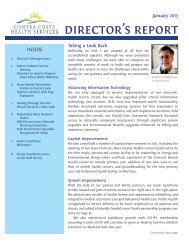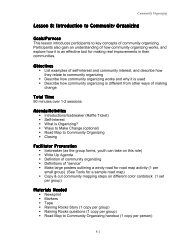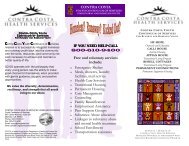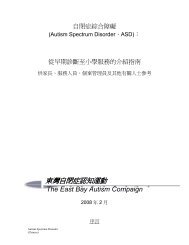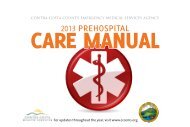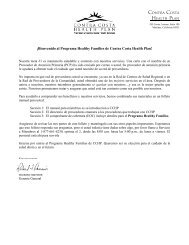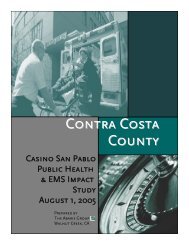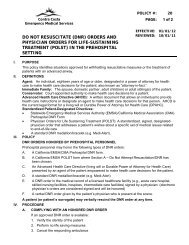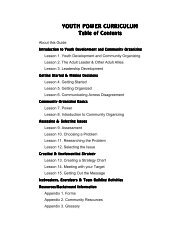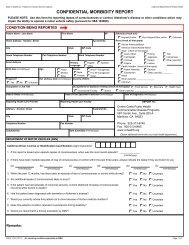EMS Policy Manual - Contra Costa Health Services
EMS Policy Manual - Contra Costa Health Services
EMS Policy Manual - Contra Costa Health Services
You also want an ePaper? Increase the reach of your titles
YUMPU automatically turns print PDFs into web optimized ePapers that Google loves.
<strong>Contra</strong> <strong>Costa</strong><br />
Emergency Medical <strong>Services</strong><br />
B. Clinical Criteria<br />
POLICY #: 33C<br />
PAGE: 2 of 3<br />
1. Patients who meet the following criteria may benefit from helicopter transport.<br />
a. Trauma patients who meet high-risk criteria according to <strong>EMS</strong> trauma triage policy<br />
except for:<br />
1) Stable patients with isolated extremity trauma (who may meet high-risk criteria<br />
on that basis).<br />
2) Patients with mechanism but no significant physical exam findings.<br />
b. Trauma patients who do not meet high-risk criteria but by evaluation of mechanism<br />
and physical exam findings, appear to have potential significant injuries that merit<br />
rapid transport.<br />
c. Patients with specialized needs available only at a remote facility such as burn<br />
victims or critical pediatric patients.<br />
d. Critically ill or injured patients whose conditions may be aggravated or endangered<br />
by ground transport (e.g. limited access via ground ambulance or unsafe roadway)<br />
may be appropriate for helicopter transport.<br />
V. HELICOPTER UTILIZATION AND CANCELLATION DECISION<br />
A. The decision to use a helicopter rests with the Incident Commander (IC).<br />
B. The IC is responsible for cancellation of the helicopter response when helicopter transport<br />
criteria are not met. The following information is important for the IC to consider in making the<br />
best possible decision regarding mode of transport:<br />
1. Patient need. The paramedic with primary patient care responsibility will have the best<br />
information regarding the patient meeting clinical criteria.<br />
2. Estimated ground transport time versus air response and transport. The ground transport<br />
crew will be the best resource for determining whether or not there will be a transport time<br />
savings based on the travel time considering current traffic/weather conditions particularly<br />
when timesavings by helicopter is minimal.<br />
3. Proximity of a helispot or need for a helicopter/ambulance rendezvous site. A significant<br />
amount of time may be added to overall transport time if a helicopter is unable to land in<br />
proximity to the patient.<br />
4. ETA of the helicopter. If the patient is packaged and ready for transport, ground transport<br />
may be the fastest mode of transport overall if a helicopter has not arrived on scene.<br />
C. The ground ambulance responding to, or at the scene, should not be canceled until:<br />
1. The helicopter has left the scene with the patient aboard, or<br />
2. The senior medical personnel with primary patient care responsibility on-scene have<br />
determined that no patient transport is required.<br />
VI. COMMUNICATIONS<br />
A. Under normal circumstances, CALCORD is utilized for air-to-ground communication. The IC or<br />
designee, in conjunction with the fire/medical dispatch will designate an alternate frequency if<br />
necessary.<br />
B. The IC or designee may cancel a helicopter response at any time prior to patient transport<br />
through the fire/medical dispatch center or by direct communication to the responding<br />
helicopter.



